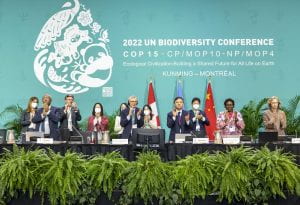Ocean Governance
Being from a small desert town in Death Valley, the ocean has always been an abstract concept to me, illusive and incredibly interesting. A while ago, all I knew about it was that it had complex creatures, a giant monster soup humans can’t seem to understand, tame, or own. Fast-forward a couple of years and I took a course in Alaska, where I was first introduced to the concept of fisheries, cruises, and ocean wildlife. While doing so I helped out in a documentary called “Cruisboom” which details the environmental hazards and social problems related to the cruise ship industry. While I don’t pretend to know everything, I’ve come to learn that the ocean can’t be owned by a single entity, rather it is a shared resource with different interests at play- and human activity has played an immense role in the ecological services the ocean provides.
The ocean is a source of raw materials for different interests. The ocean floor is a source of energy in the form of petroleum and gas. Fish and other marine organisms are used in the food industry. Important minerals are extracted from the ocean floor via deep-sea mining practices. The ocean also provides many different ecological services, such as carbon sequestration, and is a habitat for marine life. The ocean absorbs about 30% of carbon dioxide from the atmosphere (NOAA). As levels of carbon dioxide in the atmosphere increase, so does the amount of carbon dioxide in the ocean. This has made the ocean more acidic, which impacts marine life. As the ocean is a shared global resource, there are different private and public interests at play, and it is facing increasing threats under climate change and resource depletion. It is this context one must understand before attempting to assess ocean governance and its efficacy.

Image credit: National Geographic Society https://education.nationalgeographic.org/resource/marine-pollution/
Ocean governance discussions are not connected enough to environmental policy on land, especially given that around 80% of pollution to the marine environment comes from the land (NOAA). Furthermore, human activities that exacerbate climate change impacts also take place on land. Ocean governance discussions should also focus on how food security and health are not usually the goals of fishery policies, as they tend to focus on economic output (Bryndum-Buchholz). One of the most recent policy efforts, on a local level, implements both of these goals in its approach towards furthering marine life and protection. The 30×30 initiative advocates for the full conservation and protection of at least 30 percent of our lands, lakes, rivers, wetlands, and ocean by 2030. In California this initiative is also known as Executive Order N-82-20, which was issued by Governor Newsom in October of 2020. In the United States this is also known as the America the Beautiful Initiative, issued in January 2021.

Image Credit: UN Biodiversity, December 2022
On an international scale, this initiative has been promoted through private partnerships. According to an article by Laura Paddison, other international efforts push for a moratorium on deep seabed mining. This initiative is important in that currently only 17% of land resources are under conservation and protection measures and only 10% of the ocean is under protection. The Kunming Monterreal agreement was signed by over 190 countries, promising to protect nature under the initiative goals described above. The agreement also includes a reform of $500 billion of harmful subsidies to nature (Paddison, 2022). These efforts are important steps towards effective conservation and ocean governance.
Critics of the 30×30 initiative argue this movement is a federal land grab pushed by radical environmentalists. These arguments assume that this land will not be available for public use, private property will be taken, and that conservation is not the main objective of the initiative. This opposition is significant in that it could slow down progress made by the initiative. According to an article by Benji Jones, “30 by 30 is likely to open up more federal land to recreational activities, and even make them more productive through restoration and better management.” Most people actually do support what 30×30 intends to do: conserve land and take care of the environment. Initiatives like this are the first step towards a better future for our environment; we need environmental policy to offer legal protection for shared resources.
Works Cited:
Bryndum-Buchholz Andrea, et. al. Ocean Biomass and Climate Change. Reference Module in Earth Systems and Environmental Sciences. Science Direct https://doi.org/10.1016/B978-0-323-90798-9.00010-X. Accessed April 28, 2023.
Jones, Bengi. “The right-wing effort to derail Biden’s conservation plan, explained” Vox, 13 May 2021, https://www.vox.com/22421152/president-joe-biden-30-by-30-conservation-interior-department-right-wing-opposition Accessed May 2023
NOAA “What is Ocean Acidification?” National Oceanic and Atmospheric Administration https://oceanservice.noaa.gov/facts/acidification.html#:~:text=Ocean%20acidification%20refers%20to%20a,CO2 Accessed Apr 25, 2023.
NOAA. What is the biggest source of pollution in the ocean? National Ocean Service website,
https://oceanservice.noaa.gov/facts/pollution.html#:~:text=Most%20ocean%20pollution%20begins%20on%20land.&text=Much%20of%20this%20runoff%20flows,as%20a%20result%20of%20runoff. Accessed April 28, 2023.
Paddison Laura. More than 190 countries sign landmark agreement to halt the biodiversity crisis. CNN. Retrieved from https://amp.cnn.com/cnn/2022/12/19/world/cop15-biodiversity-agreement-montreal-climate-scn-intl/index.html Accessed Apr 28, 2023.


